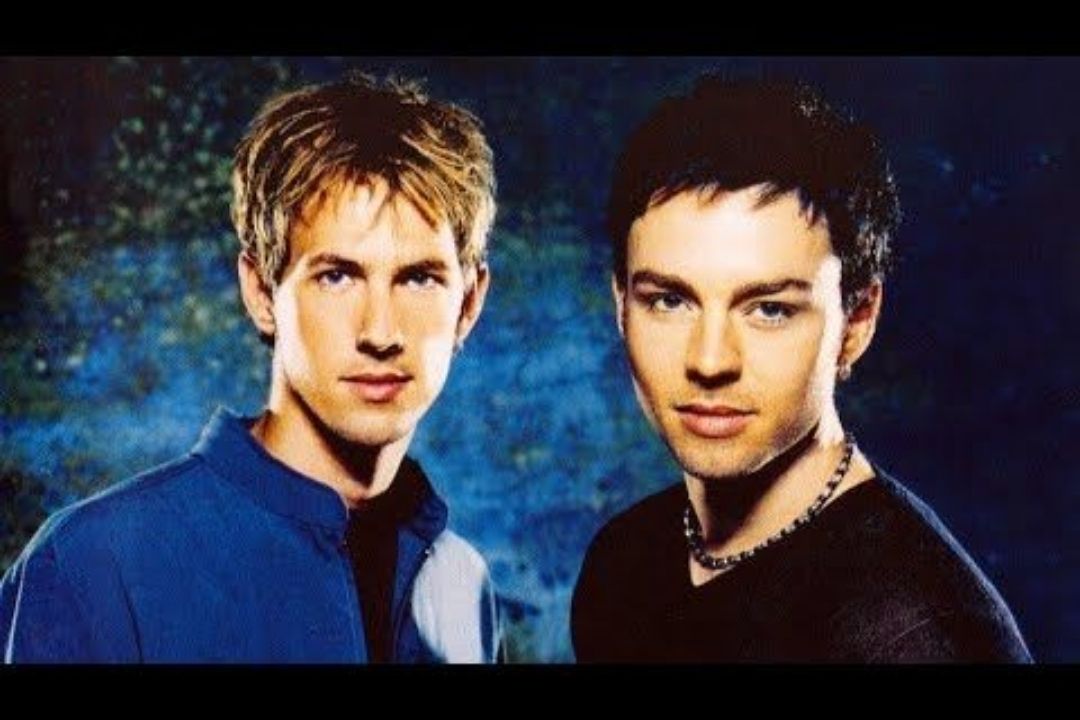About the song
“To the Moon and Back” by Savage Garden
“To the Moon and Back” is one of the most emotionally nuanced and musically distinctive songs by Australian pop duo Savage Garden, consisting of Darren Hayes (vocals) and Daniel Jones (instrumentation, production). Originally released as the second single from their self-titled debut album in 1996 in Australia and 1997 internationally, the song helped solidify the duo’s global reputation for crafting melodic, poetic, and deeply heartfelt pop music.
Following the breakout success of “I Want You”, “To the Moon and Back” offered a deeper, more introspective counterpoint—establishing that Savage Garden was not just about catchy hooks, but also about emotional storytelling. With its mix of synth-pop, adult contemporary, and soft rock influences, the song became a hit across numerous countries, reaching the Top 10 in the UK and Canada, and gaining heavy airplay on American and European radio stations.
Musical Composition and Arrangement
Musically, “To the Moon and Back” blends ambient synth layers, lush guitar textures, and a mid-tempo pop beat to create a dreamy yet grounded sonic atmosphere. The track begins with a spacey, echoing intro—instantly giving the listener a sense of vastness and emotional distance, which ties into the song’s lyrical themes.
The rhythm section—driven by a steady drum machine and smooth bassline—provides a foundation for Darren Hayes’ expressive vocal performance. His voice, with its range and emotional depth, is the centerpiece of the song, transitioning seamlessly from whispered introspection in the verses to powerful, yearning crescendos in the chorus.
Daniel Jones’ production choices allow the song to breathe, giving it an ethereal yet radio-friendly polish. The song doesn’t rely on overproduction or gimmicks—it draws strength from its sincerity, structure, and subtle musical dynamics.
Lyrics and Thematic Exploration
Lyrically, “To the Moon and Back” explores themes of emotional loneliness, yearning for unconditional love, and the search for someone who can offer more than superficial affection. The song’s protagonist is a young woman who feels alienated and misunderstood by the world around her. She dreams of a connection so deep that it transcends earthly limitations—she wants to be loved “to the moon and back.”
The opening verse sets the tone with poignant imagery:
“She’s taking her time, making up the reasons / To justify all the hurt inside.”
These lines immediately introduce us to a character who is guarded, reflective, and scarred—seeking more than fleeting attention. As the song unfolds, we learn that her emotional armor stems from disappointment and a sense of not belonging.
The chorus, with its soaring melody, delivers the central message:
“I would fly to the moon and back if you’ll be… if you’ll be my baby / Got a ticket for a world where we belong…”
Here, the promise of love is equated with an escape from the ordinary—a desire for a world where genuine connection and emotional safety are possible. It’s a declaration of love as something expansive and limitless, rather than confined by earthly conventions.
Unlike many love songs that focus on romantic clichés, “To the Moon and Back” portrays love as an emotional lifeline—a powerful force that has the potential to heal and elevate. There’s a duality at play: both escapism and realism, hope and heartbreak, fantasy and emotional truth.
Reception and Cultural Impact
While not as commercially massive as the duo’s later hit “Truly Madly Deeply,” “To the Moon and Back” became a fan favorite and a critical success. It peaked in the Top 10 in the UK, performed well in North America, and helped the group gain a significant following beyond Australia. The song also showcased Hayes’ and Jones’ ability to blend pop sensibilities with lyrical substance.
The accompanying music video—featuring a moody, urban nightscape and a narrative of a young woman escaping her mundane life—visually reinforces the song’s themes of alienation and longing. Its late-‘90s aesthetic perfectly captured the era’s fascination with emotional authenticity and introspective pop.
Legacy and Influence
Today, “To the Moon and Back” is remembered not only as an important step in Savage Garden’s rise to international stardom, but also as one of the most emotionally rich pop ballads of its time. It continues to receive radio play, and its message remains timeless in an era where emotional connection is still deeply sought after.
The song helped pave the way for future artists who sought to balance mainstream appeal with lyrical introspection, and it established Savage Garden as more than just a fleeting pop act. Darren Hayes’ vocal delivery, in particular, is often praised for its emotional honesty—something that became a hallmark of his later solo work.
Conclusion
“To the Moon and Back” is far more than just a love song. It’s a meditation on the human need for understanding, for emotional safety, and for a love that transcends the ordinary. With its haunting melody, heartfelt lyrics, and powerful vocal delivery, the track remains a standout in Savage Garden’s catalog and a classic of late-90s pop.
Whether you listen to it today or revisit it with nostalgia, “To the Moon and Back” still speaks to the deep longing within us all—for someone who truly sees us, accepts us, and loves us without condition.
